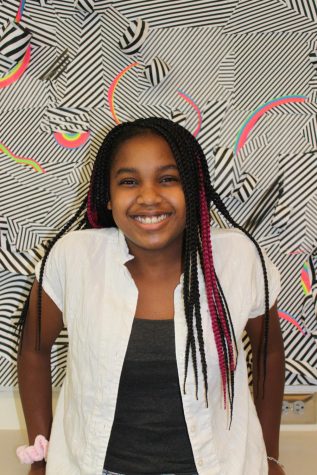Sign Language: A Needed Addition to Chamblee’s Language Classes
In everyday life, we often encounter people who speak different languages than us and we often say the same phrase: “I don’t know [that language].” Chamblee and DeKalb have been combatting this problem by making students take two to three years of Spanish, French, or German in order to graduate. While the languages are great for us to learn, many students from our school won’t encounter French- or German-speaking neighbors in their community. A language that would be more beneficial to Chamblee students would be American Sign Language (ASL).
About six million people in America are currently deaf, and it doesn’t look like that number is going down any time soon. Chances are you know a deaf person or know a person who knows a deaf person. Either way, they are all around us, but unfortunately just like Latin, ASL is slowly dying away from education. Schools have stopped teaching it, and the schools that do currently teach it are low-budget schools. If this continues, soon the deaf community won’t have an efficient way to interact with their own larger community.
Many students at Chamblee have jobs in retail or fast food but often don’t know what to do when encountering a deaf person. Sure, they can look at the customer’s phone and hope to understand the person, but wouldn’t it be way better if they could communicate through movements and expressions? Our bodies are already used to showing emotions through body language; all ASL does is increase that movement to turn those thoughts into phrases. By including ASL into students’ curriculum, they would get the chance to use it in their everyday lives and even add it to their resumes.
ASL is a very interactive language. When speaking French, Spanish, or German, a person can often decide to not pay attention to one’s face because there is a tone of voice included, but with ASL, there is no tone. When signing, it is important to utilize your entire body, making the process of learning ASL a lot more enjoyable. Classes for ASL would be a much more team-building environment too because you’d have to see everyone’s faces, bringing a certain type of bond to the class, rather than just sitting and staring at the back of someone’s head repeating the same phrase over and over.
ASL scholarships are one of the many that go unclaimed each year, sometimes with 2.9 million dollars left over. Teaching students ASL wouldn’t only allow them to interact with their community, to improve their resumes, and to bond with their classmates, but it also would give students the chance to tap into the millions of dollars in scholarships waiting for them. Teaching ASL is a win-win situation for all involved.
Your donation will support the student journalists of Chamblee High School Blue & Gold. Your contribution will allow us to print editions of our work and cover our annual website hosting costs. Currently, we are working to fund a Halloween satire edition.

Kaylee Powell is a senior and this is her second year on the journalism staff. She thinks that "Get Out" encapsulates the Chamblee experience because it's about time she leaves this sunken place, a.k.a. school.




